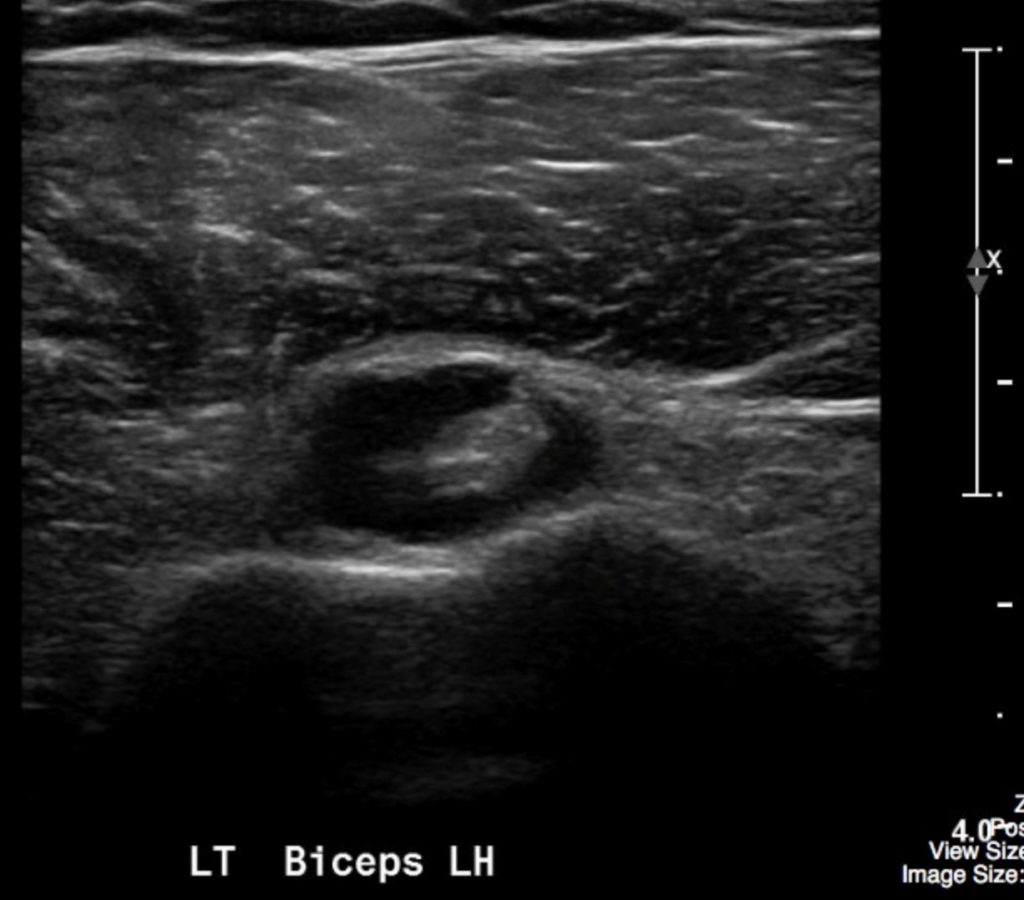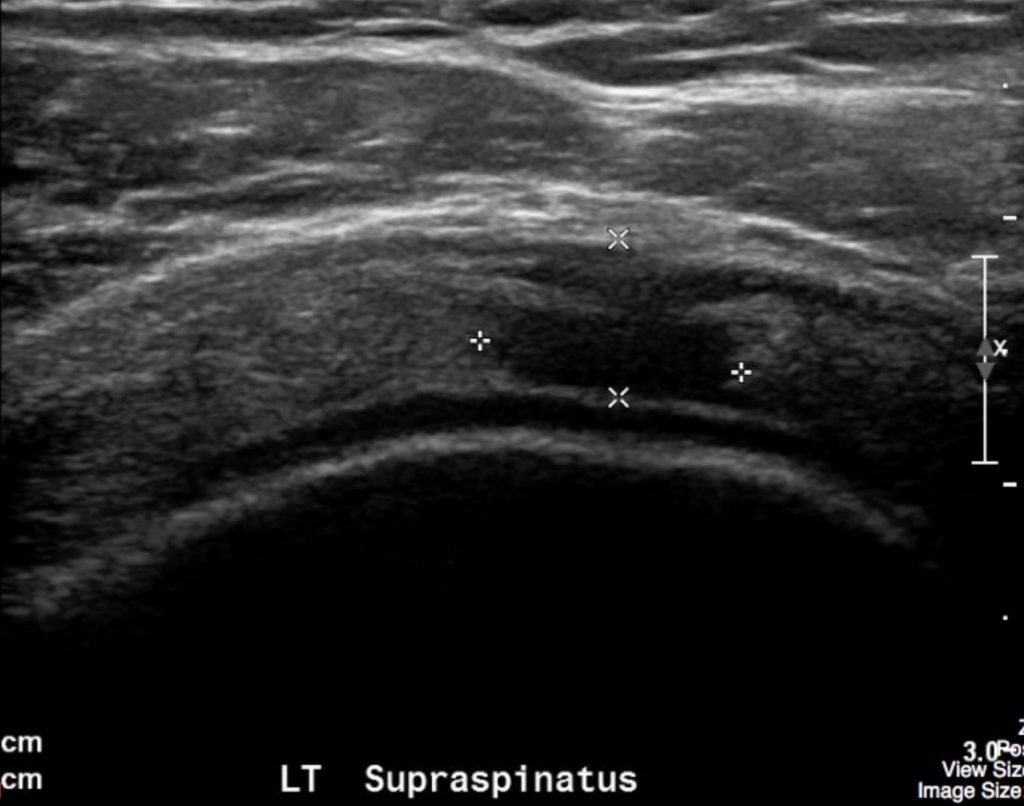89
ACR – MSK – Acute Shoulder Pain
Case
Rotator Cuff, Torn Supraspinatus Tendon
Clinical:
History – This 77 year old male slipped while exiting his truck. He felt a tearing sensation in the upper shoulder region as he grasped the door frame, while falling to the ground. He states that he really pulled his shoulder in the process.
Symptoms – The shoulder was acutely painful and there was limited, painful, range of motion, especially with abduction. No other issues.
Physical – Range of motion was very limited. There was swelling over the greater tuberosity of the humerus.
DDx:
AC joint dislocation
Clavicle fracture
Injured rotator cuff
Imaging Recommendation
ACR – MSK – Acute Shoulder Pain, Variant 5
Shoulder Ultrasound – after normal shoulder radiographs


Imaging Assessment
Findings:
There was a moderate amount of fluid associated with an intact bicep muscle long – head tendon. Dense calcifications were seen in the subscapularis tendon. There was a full-thickness partial tear of the supraspinatus tendon with a small amount of fluid seen in the subacromial-subdeltoid bursa.
Interpretation:
Long head of bicep tendonitis, calcific tendonitis of the subscapularis tendon, partial tear of the supraspinatus tendon.
Diagnosis:
Torn Supraspinatus Tendon
Discussion:
Fluoroscopic arthrography was the mainstay of evaluation for rotator cuff tear until the advent of shoulder ultrasound and magnetic resonance imaging (MRI). Fluoroscopic arthrography is now only used for patients with suspected rotator cuff disease who have a contraindication to MRI and when shoulder ultrasound (US) expertise is not available. Fluoroscopic radiography is a useful modality for directing shoulder injections and aspirations. Aspirations are useful in diagnosing inflammatory, or septic arthroplasty.
Partial-thickness tears of the rotator cuff can be seen inferiorly at the articular surface, superiorly at the bursal surface, or within the tendon substance. Tears at the articular surface are the most common type of partial-thickness tears. Full-thickness tears of the rotator cuff tendon can be accurately identified using conventional non-arthrographic MRI with high sensitivity and specificity.
MRI can aid in detecting osseous and soft-tissue abnormalities that may predispose to, or be the result of, shoulder impingement. The soft-tissue abnormalities in the supraspinatus tendon, subacromial bursa, and biceps tendon are well seen. The osseous lesions include morphologic abnormalities of the acromion and acromioclavicular joint.
The ACR Guidelines suggest MR as the best diagnostic test (priority score 9) versus Ultrasound (priority score 8), however, ultrasound is cheaper and easier to obtain than MRI and is an excellent screening strategy to allocate patients to surgical or non-surgical treatment. If surgery is contemplated the Orthopedic specialist will determine if a shoulder MR is warranted.
Attributions
Figure 14.4A Ultrasound of the left biceps long head tendon displaying fluid by Dr. Brent Burbridge MD, FRCPC, University Medical Imaging Consultants, College of Medicine, University of Saskatchewan is used under a CC-BY-NC-SA 4.0 license.
Figure 14.4B Ultrasound of the left supraspinatus tendon displaying a full thickness tear by Dr. Brent Burbridge MD, FRCPC, University Medical Imaging Consultants, College of Medicine, University of Saskatchewan is used under a CC-BY-NC-SA 4.0 license.
